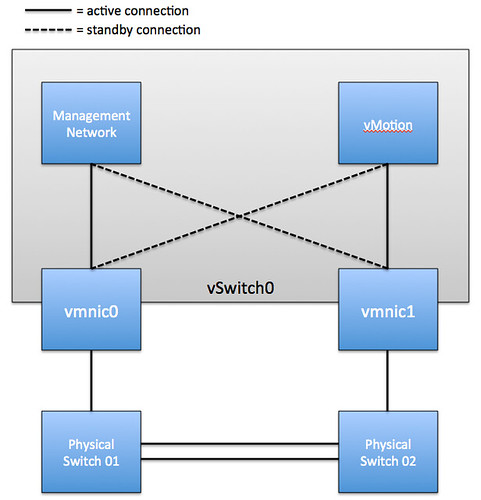Disclaimer: Now, lets make this very clear. Don’t touch “useANO” unless you are specifically instructed to do so, this article is just for educational purposes.
I had some issues in my lab with an ALUA array. (If you have no clue what ALUA is, read this post.) As you hopefully know with an ALUA array you typically have 4 paths. Two of these paths are marked within vCenter as “Active (I/O)” and the remaining two are marked as “Active”. The command-line interface describes this slightly better in my opinion as it says “Active” and “Active unoptimized”. So lets assume for you a second you would use Round Robin, vSphere is smart enough to only use the paths marked in vCenter as “Active (I/O)”.
During the discussions around the issues the setting “useANO” was dropped. I thought I knew what it did but during the discussion I started to doubt myself. So I did a quick search on the internet and noticed that not a lot of people actually knew what it stands for and what it does. I’ve seen people stating that paths are disabled or hidden… That is not the case at all. It’s not a magic setting. Lets start with explaining what it stands for.
useANO = Use Active-Non-Optimized
So in other words “useANO” allows you to enable the usage of Active-Non-Optimized paths. By default this is of course set to 0 as in a normal situation you wouldn’t want to use a non-optimized path as this would mean traffic would need to flow back to the owning processor. Chad Sakac made a nice diagram that depicts this scenario in his article on ALUA (must read!). Note that “SP B” is the processor that “owns” the LUN and the right path would typically be the path marked as “Active (I/O)”. The left path would be the “Active” path or less elegantly put the Non-Optimized path:
As you can understand having traffic flowing through a non-optimized path is normally something you would want to avoid as this will cause latency to go up. (more hops) This is a scenario of course that could happen when the path to the “owning” processor (SP B in the diagram) is unavailable for whatever reason…. You could also force this to happen by setting “useANO=1”. That is what is does, it allows you to use non-optimized paths. For those who skipped it, please read the disclaimer at the top!


